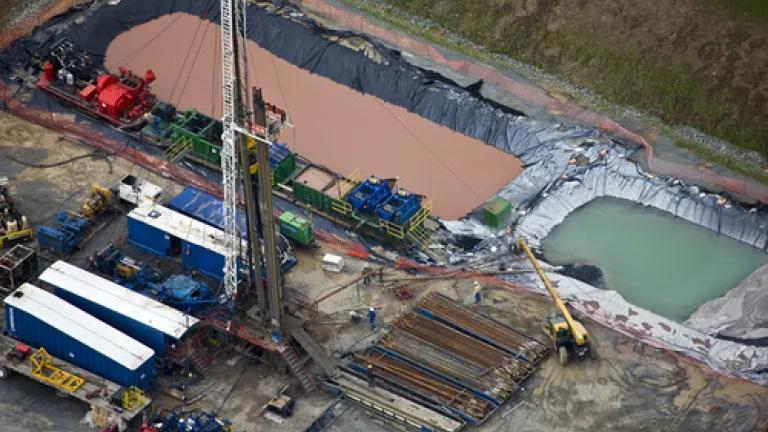
Natural gas fracking has been in the news a lot in the past few weeks. The Obama Administration took initial steps to limit air and water pollution from fracking. Even though these measures are not yet strong enough to protect Americans from the dangers of fracking, the natural gas industry says they don’t need government standards because companies can look after themselves.
At the same time this news was unfolding, several local stories revealed what it’s like to actually live next to a fracking site.
One couple in Pennsylvania learned their request to refinance their home was denied because the mortgage lender said the house “is located across the street from a gas drilling site.” Residents of a town in Wyoming heard that yet another scientist has confirmed their ground water was contaminated by fracking. And a doctor in Pennsylvania reports that she can’t find out which chemicals might be sickening her patients unless she signs a confidentiality agreement with a natural gas company. (You can hear similar stories in this week’s series on fracking at NPR.)
These on-the-ground stories belie industry claims that there is nothing to worry about and illustrate why we need strong national standards to protect against reckless fracking operations.
The administration’s new standards are a move in the right direction. They send a message that this largely unregulated industry will no longer get a free pass on its pollution. That is a good start, but much more needs to be done.
At the beginning of May, the Bureau of Land Management released draft standards for fracking on all public lands and 55 million acres of private lands. These new standards would require natural gas companies to do a better job of managing fracking waste—the thousands of gallons of contaminated water remains after a well has been fracked—by storing it in lined pits or tanks instead of unlined pits before companies dispose of it. While a start, this waste is still one of our biggest concerns and the way it’s handled, even under this new standard, is woefully inadequate, as NRDC details in a new report.
The new safeguards will also require companies to disclose the chemicals they use during fracking. This sounds like a major breakthrough. And compared to the current system in which companies can hide their chemical cocktails, it is an improvement. But the industry succeeded in wrestling a major concession from the administration: companies don’t have to tell nearby residents which chemicals are being used until 30 days have passed.
The fact that the BLM acquiesced to this loophole is a testament to the oil and gas industry’s relentless political pressure and deep-pocketed influence.
While this delay may be good for gas companies, it makes life harder for the people who live near their drill pads. People should be informed before chemicals end up in the ground next to their homes and schools. It’s hard to take precautions after the damage is already done. And it’s hard to test your drinking water if you don’t know what chemicals to look for. Meanwhile, some of the chemicals can still be kept secret if they are linked to company-owned formulas—even doctors and emergency responders trying to treat patients may be barred from this information.
The industry’s refusal to be more transparent makes people wonder what companies are hiding. If they are so confident their fracking cocktails are safe, why don’t they share more information?
In another move to address fracking pollution, in April the Environmental Protection Agency announced the first-ever national limits on dangerous air emissions coming from natural gas wells. These toxins have been linked to headaches, asthma symptoms, childhood leukemia, and other cancers. Some companies already use proven, cost-effective solutions for capturing this dangerous pollution.
Yet still the industry resisted this effort to clean up their dirty emissions and clamored for exemptions. The new air standards give companies a two-and half-year delay before they have to comply. Additionally, because the standards don’t cover existing sources, they don’t protect the people living next to natural gas wells already.
The water pollution standards are still in draft form; the administration should use the opportunity to strengthen them before they become final. The BLM manages oil and gas resources in most states, and it should be a leader and get the standards right.
NRDC will be pushing at the federal and state level for stronger protections against water and air pollution from fracking. As the stories from the fracking fields reveal, Americans need someone standing up for their health and safety in the fracking operations moving into our backyards.
